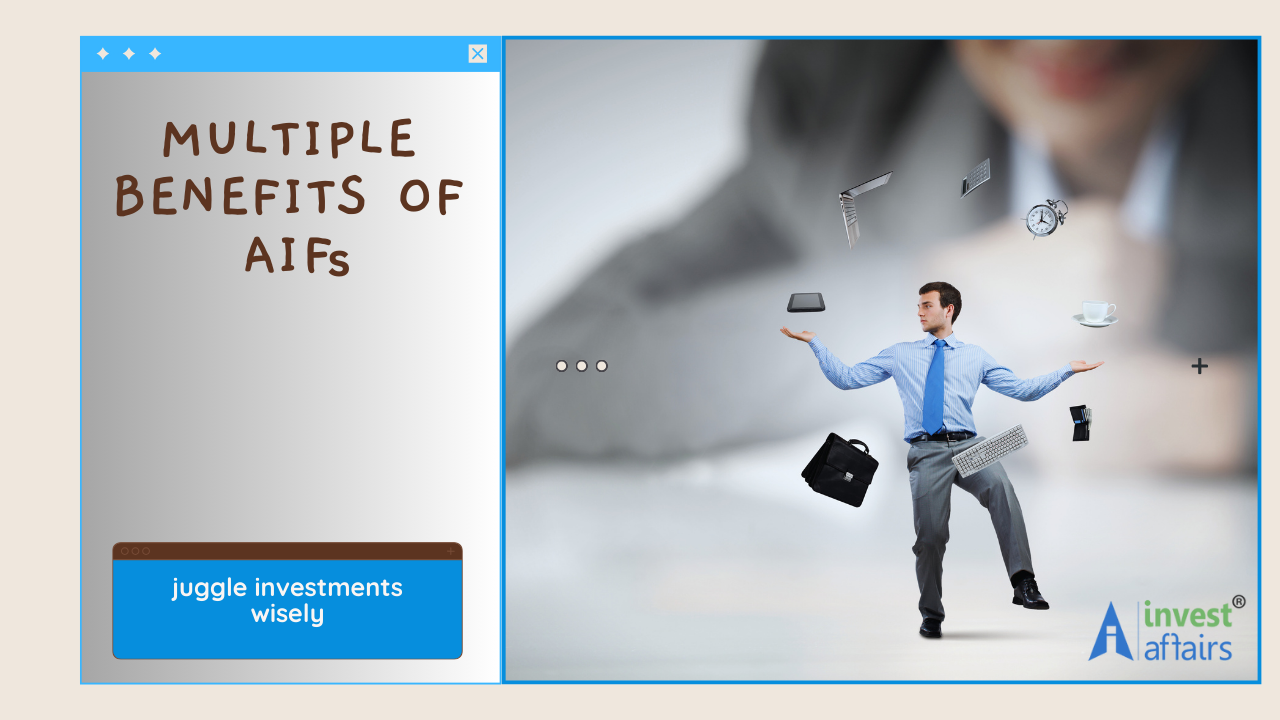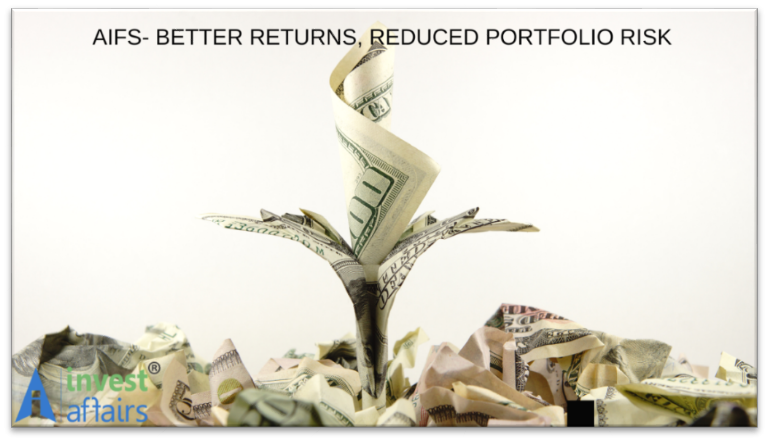
WHAT IS THE ALTERNATIVE IN ALTERNATE INVESTMENT FUND?
- Sun Sep 29 18:30:00 UTC 2024
- In Personal Finance by Malhar Majumder
“The first step towards getting somewhere is to decide that you are not getting to stay where you are”- J.P. Morgan.
Aparna completed her master’s in journalism in the early nineties and got her first job with a pink paper. This is where she learnt that financial assets like stocks and bonds are the primary bricks of an investment portfolio. Though she moved to the automobile industry, she effectively used Mutual Funds (MF) to invest in financial assets in a well-diversified manner. Over the following decades, her MF portfolio has done exceptionally well, bringing her nearer to her financial goals. However, she can now see her investments are at a relatively higher value today. She is apprehensive that a higher initial value may lower the medium to long-term return expectation; after all, the MF commercials come with the statutory disclaimer that “Past performance is not necessarily indicative of future performance”.
In this backdrop, she meets Sujata, her ex-colleague, from the pink paper. Sujata is the compliance head of an investment banking entity offering Alternate products. Over coffee and finger food, their free-wheeling discussion moved from current society, financial independence, traditional investments and finally to alternate products and their benefits in the portfolio. Over the last couple of decades, the investible universe has expanded. Financial innovation and technological advancement have democratised the availability of previously novel options to investors. Products like Gold, REITS, High-Yielding Bonds, ETFs, and Index Link Bonds are easily accessible today. They are becoming an integral part of the investment portfolio, a marked deviation from the two-asset world.
However, searching for alternate assets continued as discerning investors searched for alpha with reduced portfolio risk. They discovered these niche assets by adopting strategies that exploit market inefficiencies and behavioural biases, which can offer entirely uncorrelated returns to their traditional counterparts. Uncorrelated assets are those whose price movements are not directly tied to the performance of traditional assets, providing a hedge against market volatility. On their own, they also give better returns. Low to negative correlation with stocks makes them a hedge in times of crisis.

Sujata revealed the three untouchables in the investment literature: Leverage, Short Selling, and Derivatives. Alternate products exploit all three to create their niche. Leverage or borrowing helps adopt lower-risk strategies with higher risk-adjusted returns. Short selling, which recently made headlines in India with the Hindenburg fiasco, hedges unwanted exposures in risk assets. The frequently cited quote from Buffett’s Berkshire annual letter of 2002 describes derivatives as the “financial weapon of mass destruction.” However, in the same newsletter, Buffett mentioned, “I sometimes engage in large-scale derivatives transactions to facilitate certain investment strategies.” Alternate managers exploit these non-linear payoff structures of derivatives while designing the products; as Thomas Edison says, “the value of an idea lies in its use.” Aparna was devouring every word of her friend as an unfamiliar horizon unfolded before her. “Are these regulated? Who offers them? Who can invest? What are the Risks and Tax implications?” – she asked a flurry of questions when Sujata stopped to order more coffee.
The market regulator, SEBI, plays a crucial role in the universe of Alternative Funds under SEBI (AIF) Regulations, 2012. Unlike mutual funds, which can pool funds from the public, the alternative category can pool money only from select investors. These private investors are sourced from institutions like pension funds, endowment funds, sovereign wealth funds, family offices, or high-worth investors. These investors understand complex investment strategies, have higher risk-taking abilities, and are trying to complement their traditional portfolio with asset classes likely to improve their long-term risk-adjusted returns.
The SEBI disclosure dated 30 th June 24 furnished that Indian AIFs have already raised INR 4.74 trillion against a commitment of INR 11.79 trillion pledged by the investors. Sujata had mentioned earlier that alternate fund managers adopt different strategies to manage the pooled funds. Market regulator SEBI clubbed these strategies into three distinct categories. Investors looking for high-return, high-risk opportunities can choose Category I AIF, which invests in startups, early-stage ventures, social ventures, small and medium enterprises, infrastructure and sectors the government has identified as economically desirable. Category II funds invest in options with moderate risk, like Private Equity or Private Credits.

These funds can offer direct exposure to profitable but risky areas like real estate financing and commodity investment in a structured manner. The real action is in the Category III funds. Depending on the approved information memorandum circulated to prospective investors, the fund manager employs complex trading strategies with listed and unlisted securities and may balance the exposure with financial derivatives. They can also use leverage, invest like a hedge fund looking for short-term trading gains, act as special situation funds, invest in distressed assets, or invest in companies needing funds for corporate actions like mergers, acquisitions, or takeovers. The rational preference for safety over return made Category II AIF the largest mobiliser of funds, accounting for over 70% of the gross funds raised so far. Category III comes in a distant second at around 20% of gross.
It was already late, and they had ordered a light lunch. Aparna remembered Milton Friedman’s saying, “There is no such thing as a free lunch”. She asked Sujata the last question of the day: How are these funds taxed? Category I and II AIFs are pass-through vehicles. Investors must pay income tax on all earnings and gains based on their respective income tax slabs. Category III AIF doesn’t enjoy this pass- through status; hence, the taxes on all earnings and profits are borne at the Fund level.
It was time for the two friends to part ways. Aparna thanked her friend for her commentary on alternate assets and made a mental note to make it a habit to make the unfamiliar familiar; as Marshall Goldsmith has put it, “What got you here may not get you there.”
This article was published recently in a leading Newspaper. The link to the same is being provided here:
https://tinyurl.com/investaffairsalternatives
Please visit our office or talk to our experts for taking informed decisions on investments.
Disclaimer: The data and information has been sourced from various domains available to the public. We have taken utmost care to represent the same as factually as has been made available. Please do not make any decisions based on our blogpost. Kindly check the data & information independently. For further guidance on finance and investment please reach out to our experts at Investaffairs.
If you have any Personal Finance query, do write to us
Categories
Recent Posts





